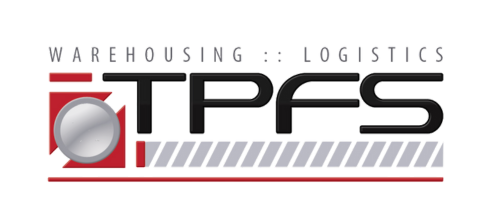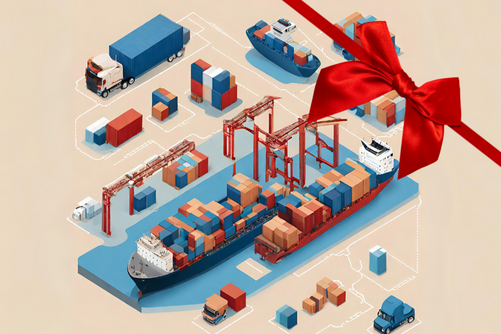Industry Insights
Navigating the East Coast Port Strike: Supply Chain Resilience
As the East Coast ports grapple with a significant strike that began October 1, 2024, businesses are racing to adapt. This strike, involving nearly 50,000 members of the International Longshoremen's Association (ILA), has the potential to disrupt over 50% of U.S. imports, threatening supply chains, and inflating costs. Here's how TPFS Warehousing, strategically located on the West Coast, stands ready to assist:
Understanding the Strike's Impact:
Understanding the Impact:
-
Economic Consequences: The strike threatens billions in economic activity weekly, with ripple effects across industries from automotive to agriculture.
-
Supply Chain Bottlenecks: East Coast ports are crucial for both imports and exports, making rerouting not just an option but a necessity for uninterrupted business operations.
-
West Coast as an Alternative: With East Coast ports possibly shut down, shifting operations to West Coast ports becomes imperative for maintaining supply chain continuity.
Action Plan for Businesses:
The current logistics landscape demands agility. Here's how you can prepare:
-
Diversify Routes: Consider rerouting through West Coast ports, where local Southern California 3PLs can manage your logistics.more
The Critical Role of 3PL Providers in Disaster Recovery and Business Continuity
In an increasingly unpredictable global landscape, businesses are more vulnerable than ever to disruptions—whether from natural disasters, supply chain breakdowns, or other unforeseen events. To mitigate these risks, many companies turn to Third-Party Logistics (3PL) providers, whose specialized services are crucial in maintaining operations during times of crisis.
How 3PL Providers Enhance Disaster Recovery Efforts
When a disaster strikes, the ability of a business to recover quickly can be the difference between minimal disruption and long-term setbacks. 3PL providers play a vital role in this recovery process by offering several key advantages:
-
Geographically Diverse Networks Most 3PL providers operate multiple warehouses across various regions, allowing businesses to quickly pivot and reroute inventory if one location is compromised. This geographical diversity ensures continuity and reduces the risk of significant delays.
-
Scalable Operations The flexibility of 3PL providers to scale resources up or down is invaluable during emergencies. They can quickly provide additional storage space, transportation options, or labor to meet sudden increases in demand or to address supply chain disruptions.more
Proactive Strategies to Prep Your Supply Chain for the Holiday Rush
The holiday season, with its promise of festive cheer, also brings with it a surge in consumer demand. For businesses, this means ensuring that their supply chain is robust and resilient enough to handle the influx. And as we close out September, the urgency to prepare becomes even more pronounced. Starting now not only gives businesses a head start but also provides a buffer against unforeseen challenges. Here are 10 strategies to bolster your supply chain and ensure a smooth holiday season.
1. Accurate Demand Forecasting:
Why It Matters: Anticipating customer demand is crucial to avoid stock outs or overstocking.
Strategy: Utilize past sales data, current market trends, and predictive analytics tools to forecast demand accurately.
2. Strengthen Supplier Relationships:
Why It Matters: Reliable suppliers ensure consistent product availability.
Strategy: Regularly communicate with suppliers, discuss anticipated holiday needs, and have backup suppliers in place.
3. Optimize Inventory Management:
Why It Matters: Efficient inventory management reduces holding costs and ensures product availability.more
The Boom-and-Bust Cycle of the Trucking Industry and the Supply Chain
The trucking industry, often seen as the backbone of global commerce, is no stranger to the volatile swings of market dynamics. Like a pendulum, it oscillates between periods of boom and bust, driven by a myriad of factors that influence demand and supply. But what causes these fluctuations, and why does the industry seem trapped in this cyclical pattern? More importantly, how do these shifts in the trucking industry ripple through the broader supply chain?
The Demand Surge and Its Aftermath
When the economy thrives, consumers spend more. This spending isn't just on final products; it's on the raw materials, the intermediate goods, and the final products that move through the supply chain. As consumers spend, the need for transport increases exponentially. A single purchase, say a refrigerator, triggers a cascade of transportation needs: from the last-mile delivery to the consumer's house, to restocking the distribution center from the manufacturer, and even further back to delivering parts to the manufacturer.
During these boom times, shippers clamor for more capacity, leading to skyrocketing market prices. Carriers, interpreting this surge in demand as a new norm, invest heavily in new trucks and hire more drivers. But as with all booms, a bust is often lurking around the corner.more
Decoding the Role of "Supply Chain Visibility"
Welcome to a new, exciting edition of "Word of the Day Wednesday," where we unravel the mysteries behind essential logistics terms. Today, let's shine a spotlight on "Supply Chain Visibility" and explore why it's a game-changer in the world of logistics and beyond.
Defining Supply Chain Visibility
Imagine having a magic crystal ball that lets you track your products' journey from manufacturer to your doorstep. That's the essence of supply chain visibility. In simple terms, it's the ability to monitor and trace every step of your goods' movement, providing real-time insights into their location, status, and conditions. From sourcing raw materials to delivering the final product, supply chain visibility keeps you in the know.
Why It Matters
1. Precision in Planning: With supply chain visibility, you're not just guessing where your products are; you know. This data-driven approach empowers you to plan better, anticipate potential delays, and ensure your inventory aligns perfectly with demand.
2. Customer Satisfaction: In the age of instant gratification, customers crave information. Supply chain visibility lets you provide accurate delivery estimates, fostering trust and customer loyalty.more
The Growing Role of 3PLs in the E-commerce Boom
The global pandemic has forever transformed the retail landscape, accelerating the shift towards digital commerce. This e-commerce boom has created both significant opportunities and unique challenges for the Third-Party Logistics (3PL) industry. At TPFS Warehouse, we are leveraging our expertise and innovative technologies to adapt and thrive in this new era.
The Expanding Role of 3PLs in E-commerce
As consumers increasingly turn to online shopping, businesses must respond by ensuring efficient and reliable delivery of goods. This is where 3PLs play a pivotal role. We manage and streamline logistics operations, enabling businesses to focus on their core competencies.
However, the e-commerce landscape brings with it a set of challenges, including fluctuating demand patterns, increased customer expectations, and the need for efficient last-mile delivery.
Enhancing Warehouse Management Systems
In the e-commerce sector, efficient warehouse management is critical. By enhancing our Warehouse Management System (WMS), we're able to automate routine tasks, improve accuracy in order picking, and optimize space utilization. This results in faster order processing, reduced errors, and higher customer satisfaction.more
Navigating Regulatory Compliance in Supply Chain Management
In today's globalized economy, businesses must navigate a complex landscape of regulatory compliance across various jurisdictions, ensuring that their supply chain operations adhere to import/export controls, environmental standards, and labor laws. In this post, we will discuss the challenges of regulatory compliance in supply chain management and provide solutions to help businesses overcome these hurdles.
One of the primary challenges of regulatory compliance is understanding the multitude of regulations that apply to different countries and industries. Businesses must stay informed about the latest rules and requirements, which can be a time-consuming and resource-intensive process. To ensure compliance, you can invest in compliance management software or partner with regulatory consultants or third-party logistics (3PL) providers with expertise in navigating complex regulatory environments.
Ensuring supplier compliance is another challenge, as businesses must verify that their suppliers are adhering to the required regulations. This is especially important in industries with stringent regulations, such as food, pharmaceuticals, and chemicals. To be proactive, implement a comprehensive supplier management process, including regular audits and assessments, to ensure suppliers meet regulatory standards. Collaborate with suppliers to address any compliance issues and consider partnering with a 3PL provider with experience in managing supplier compliance.more
The Impact of International Trade Regulations on California-based 3PLs
International trade regulations play a crucial role in the global movement of goods and services. For businesses that rely on importing and exporting, staying compliant with these regulations is essential. California-based 3PLs and their clients are no exception, as they must navigate the complexities of trade regulations to ensure a seamless and efficient supply chain. In this blog post, we'll discuss the impact of international trade regulations on California-based 3PLs and their clients, and how partnering with a knowledgeable 3PL provider can help businesses maintain compliance and mitigate risks.
One of the primary challenges for California-based 3PLs and their clients is ensuring compliance with customs and import/export regulations. Failure to comply can result in fines, penalties, and delays in the movement of goods. A reliable 3PL provider with expertise in international trade can help businesses navigate these regulations, ensuring the proper documentation, classification, and valuation of goods to avoid costly errors and delays.
Changes in tariff rates and duty structures can significantly impact the cost of importing and exporting goods. California-based 3PLs and their clients must stay informed of these changes to make informed decisions about sourcing, pricing, and inventory management. A knowledgeable 3PL provider can help businesses understand and manage the impact of tariffs and duties on their supply chain, reducing risks and maintaining cost efficiency.more
Managing Seasonal Demand Fluctuations: The Advantages of Partnering with a Flexible California 3PL Provider
With summer just around the corner, we are seeing that familiar shift in season demand as we head out of the cold and into the warmer months. Seasonal demand fluctuations present a significant challenge for businesses across various industries. From retail to manufacturing, companies must adapt to changes in customer needs and market conditions throughout the year. Partnering with a flexible California 3PL provider can help businesses effectively manage these fluctuations, ensuring a smooth and efficient supply chain. In this blog post, we'll explore the advantages of working with a flexible 3PL provider to handle seasonal demand changes in your California-based operations.
A flexible 3PL provider can offer scalable warehousing solutions to accommodate the ebbs and flows of seasonal demand. This means that during peak seasons, your business can easily expand its storage capacity to handle increased inventory levels. Conversely, during low-demand periods, you can scale back your storage needs to reduce costs and avoid paying for unused space. One of the major challenges during seasonal demand fluctuations is managing labor requirements. A flexible California 3PL provider can help you scale your workforce up or down as needed, providing trained and skilled staff to handle increased workloads during peak seasons and reducing labor costs when demand subsides.more
The Impact of California's Warehouse Industry on the Environment
California's warehouse industry is an integral part of the state's economy, but it also has significant environmental impacts. With the rapid growth of the industry, there are growing concerns about air pollution, water usage, and waste disposal. While there have been efforts to mitigate these impacts, more needs to be done to ensure a sustainable future for the industry.
One of the major concerns with the warehouse industry in California is air pollution. The use of diesel trucks and other heavy equipment produces high levels of emissions, which can have serious health impacts on nearby communities. There have been efforts to transition to cleaner energy sources, such as electric vehicles, but progress has been slow.
Another challenge is the amount of water used by warehouses for various purposes, including cooling and cleaning. This has led to concerns about the impact on the state's already limited water resources. However, some companies have implemented water conservation measures, such as using recycled water for non-potable purposes, to reduce their water usage.
Lastly, the warehouse industry generates significant amounts of waste, including packaging materials and discarded products. While recycling programs have been implemented in many companies, waste reduction and sustainable practices are still a significant challenge for the industry.more
California Warehouse Industry: A Growing Economic Powerhouse
The warehouse industry in California is a significant contributor to the state's economy, generating over $100 billion in economic output and supporting more than 800,000 jobs. As a hub for the distribution and logistics industry, California's well-developed infrastructure, strategic location, and favorable business environment have attracted numerous companies seeking to tap into the region's vast consumer base and global connectivity.
The rise of e-commerce has fueled demand for larger, more sophisticated warehouses capable of handling increased order volumes and faster delivery times. Additionally, the industry is embracing new technologies such as automation, robotics, and artificial intelligence, which are expected to improve efficiency and productivity while reducing operational costs.
To learn more about the latest trends and innovations in the California warehouse industry, check out this article on the rise of automation and robotics in warehouse operations.
Stay tuned for more daily blog posts on the warehouse industry in California and how TPFS Warehouse can help your business succeed.more











